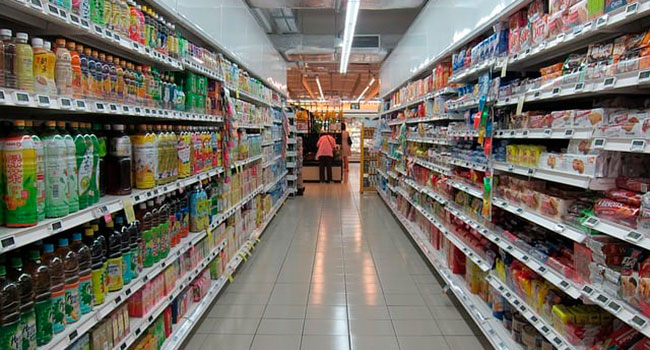 Retail food prices aren’t moving much. They’re barely higher than last year, up a modest 0.5 per cent. And according to Statistics Canada, prices dropped by 0.7 per cent over the winter months.
Retail food prices aren’t moving much. They’re barely higher than last year, up a modest 0.5 per cent. And according to Statistics Canada, prices dropped by 0.7 per cent over the winter months.
U.S. grocers are dealing with the same issue.
Since Canada’s economy has some momentum, you would expect food retail prices to inch higher. But they’re not moving for several reasons.
Grocers will always pick the right time to raise prices. Unemployment is near historic lows, consumer confidence is relatively high and inflation is inching upward. Normally, these are perfect market conditions.
Not this time, for a number of reasons:
• Walmart and Amazon are at war, trying to attract customer loyalty through online strategies. Walmart’s online food sales were disappointing in the last quarter but sales are still growing.
• Generic brands are becoming increasingly popular as consumers trade down. Brands are less important to a growing number of consumers, so trading down has become less embarrassing and more of a statement that consumers want to make while shopping.
• Loyalty – once the most powerful tool a grocer needs to increase sales – is now almost non-existent.
The power is firmly in the hands of consumers and grocers know it.
But with interesting tweaks to grocers’ strategy, profits are still there – even if market shares are not.
For the past few years, grocers have been cutting costs and passing the savings on to consumers, while hoping that the perfect inflationary environment would return so they could raise prices again. The return of food inflation was exactly what the grocery industry hoped for but results have been disappointing.
With higher general inflation, costs are increasing and grocers are getting hit in more ways than one.
Grocers can try to justify their poor financial performance, citing higher minimum wages and how much pressure they’re under, but top-line growth revenues are painfully idle for most of them.
All grocers are moving aggressively on their online strategy and also looking to home delivery as soon as possible.
In many markets – Toronto, Guelph, Ont., Halifax, Vancouver, among others – the number of stores is increasing. There are almost 24,000 food and beverage stores in Canada, up more than five per cent from about two years ago. It seems some grocers continue to build new stores just for the sake of it. Some executives seem to think bricks-and-mortar stores are still a sign of business success but it just isn’t true anymore.
Pressures are also coming from the online market, as more small- and medium-sized companies chip away at market shares in some food categories. It’s not just Amazon. A portfolio of intriguing small companies use virtual platforms to brand and commercialize high-value products that can’t be found elsewhere.
Innovation is always seen as a logical path to growth in the grocery business but how we define innovation in food is also changing. Many innovative products are becoming known in Canada but most aren’t sold by major grocers. They’re sold online or through independent shops. This is another major problem that Canada’s grocers will need to fix quickly.
If grocers’ capacity to increase revenues is hampered by more competition, the consequences of these pressures will be shared with food processors and others in the supply chain. To make matters worse, relationships within the food value chain have not been great in recent years.
And while the North America’s food retailing sector struggles, food service is a different story entirely. Food service prices have gone up by more than four per cent since the beginning of the year and the sector shows no signs of slowing down.
The convergence of retailing and service will be a definite attraction for the food retailing sector, which is desperate for growth.
Facing swift changes in consumer preferences, the number of food stores we have in Canada can’t be sustained. Don’t be surprised to hear more about food store closures in months to come.
And don’t expect food prices to go up any time soon.
Dr. Sylvain Charlebois is senior director of the agri-food analytics lab and a professor in food distribution and policy at Dalhousie University.
Sylvain is a Troy Media Thought Leader. Why aren’t you?
For interview requests, click here. You must be a Troy Media Marketplace media subscriber to access our Sourcebook.
The views, opinions and positions expressed by columnists and contributors are the author’s alone. They do not inherently or expressly reflect the views, opinions and/or positions of our publication.


